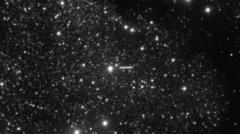The Atacama Desert in Chile sits long and lean, sandwiched between the Andes Mountains and the Pacific Ocean. Its extreme aridity makes it known as one of the clearest places on Earth to view the night sky and is famed for hosting the largest radio telescope globally.
This normally barren landscape has been astonishingly decorated by a vibrant array of wildflowers, brought to life by significant rainfall during the southern hemisphere's winter months. Such events, where dormant seeds spring to life due to above-average rainfall, are rare occurrences, happening only every few years.
Typically, the Atacama receives less than 15mm of rain annually. However, these past months saw over 12mm of rainfall during August alone - much of which fell in just one day. In fact, the desert even experienced a rare blanket of snow back in June.
This magnificent bloom consists of more than 200 different species, with many not found elsewhere in the world. This natural phenomenon is expected to peak from late August to November. Although considered infrequent, similar blooms were witnessed in 2024 following heavy rains. According to CONAF, Chile's National Forest Corporation, this year's display will remain vibrant for a few more weeks.

















